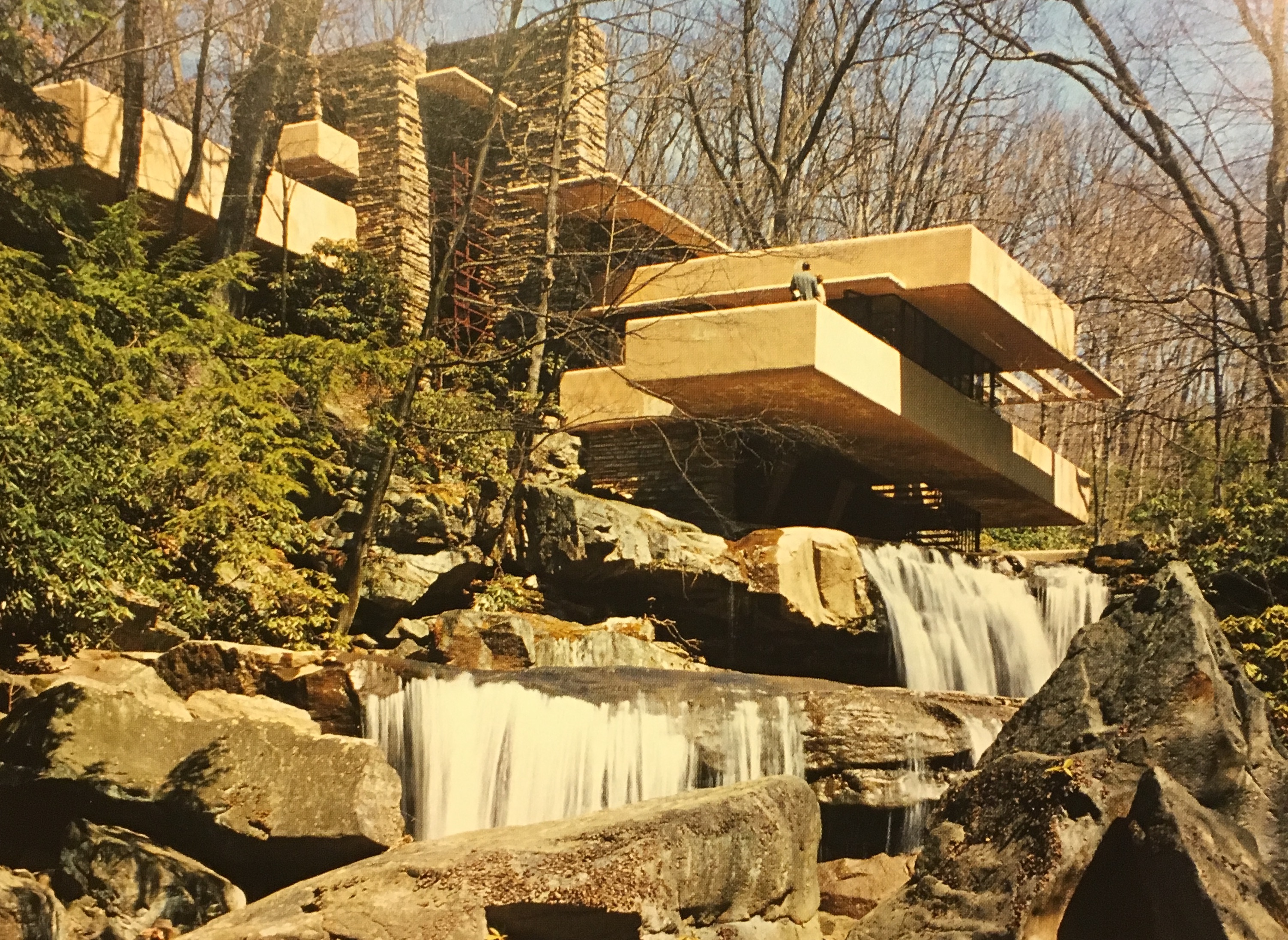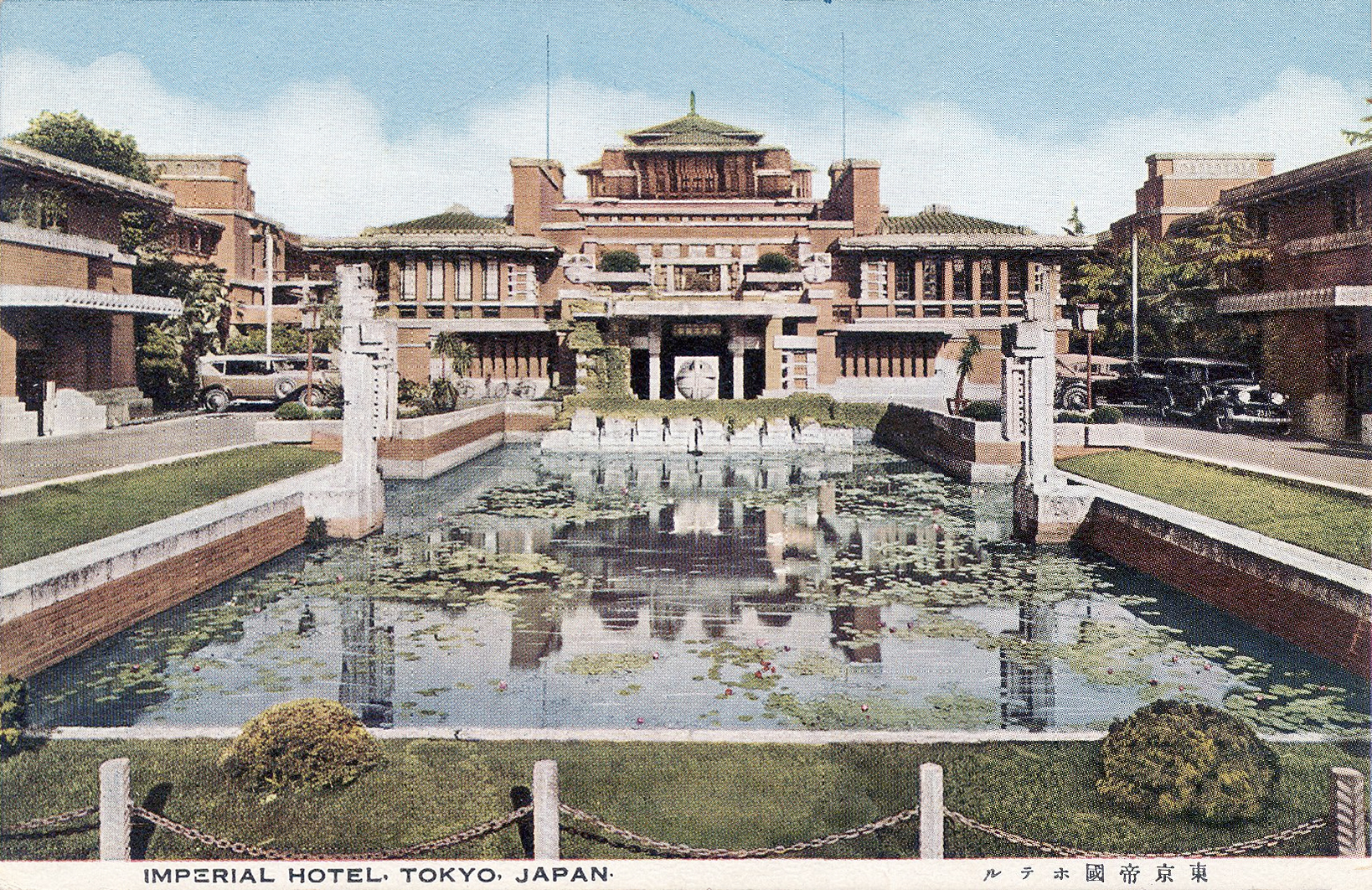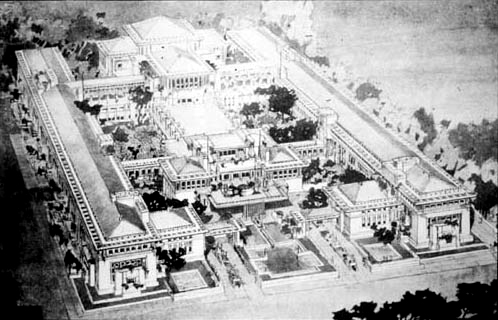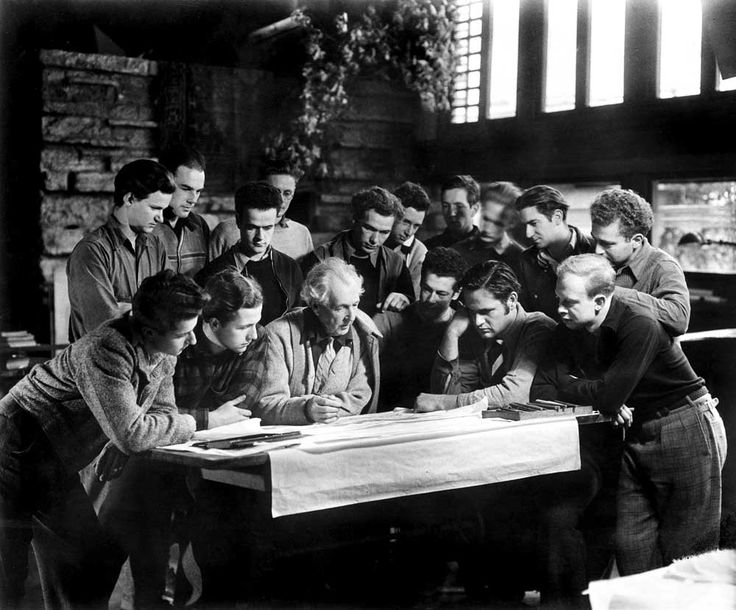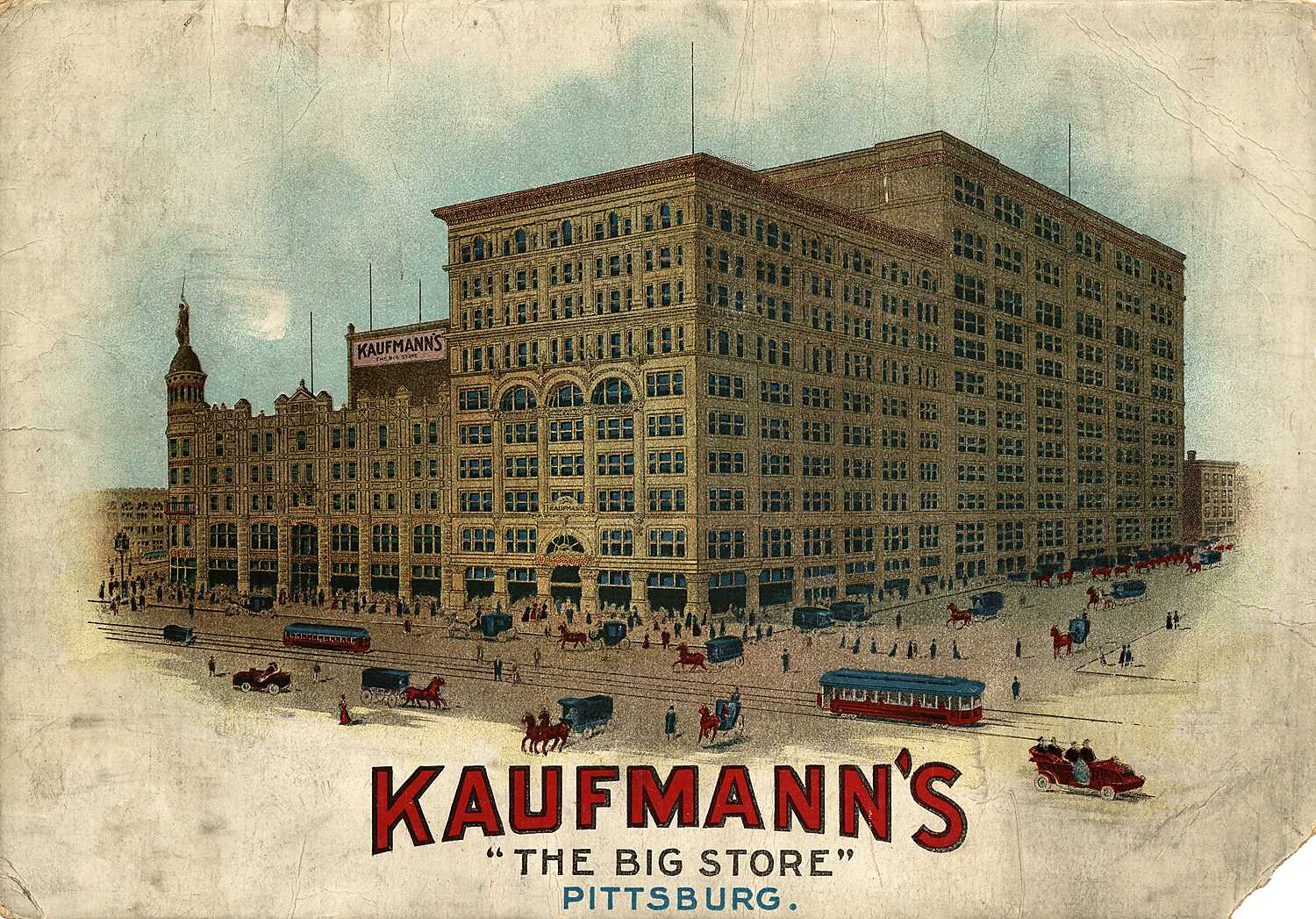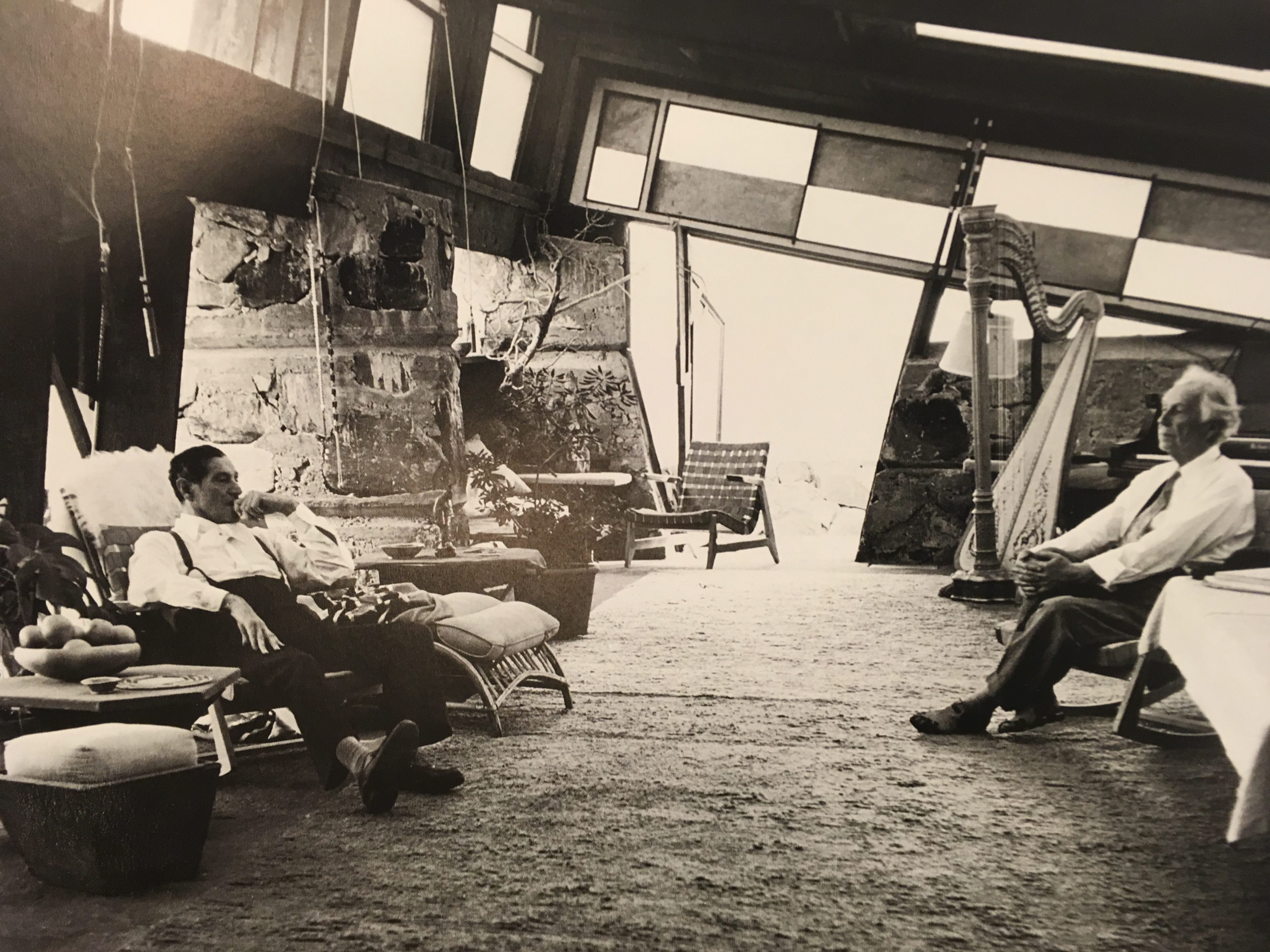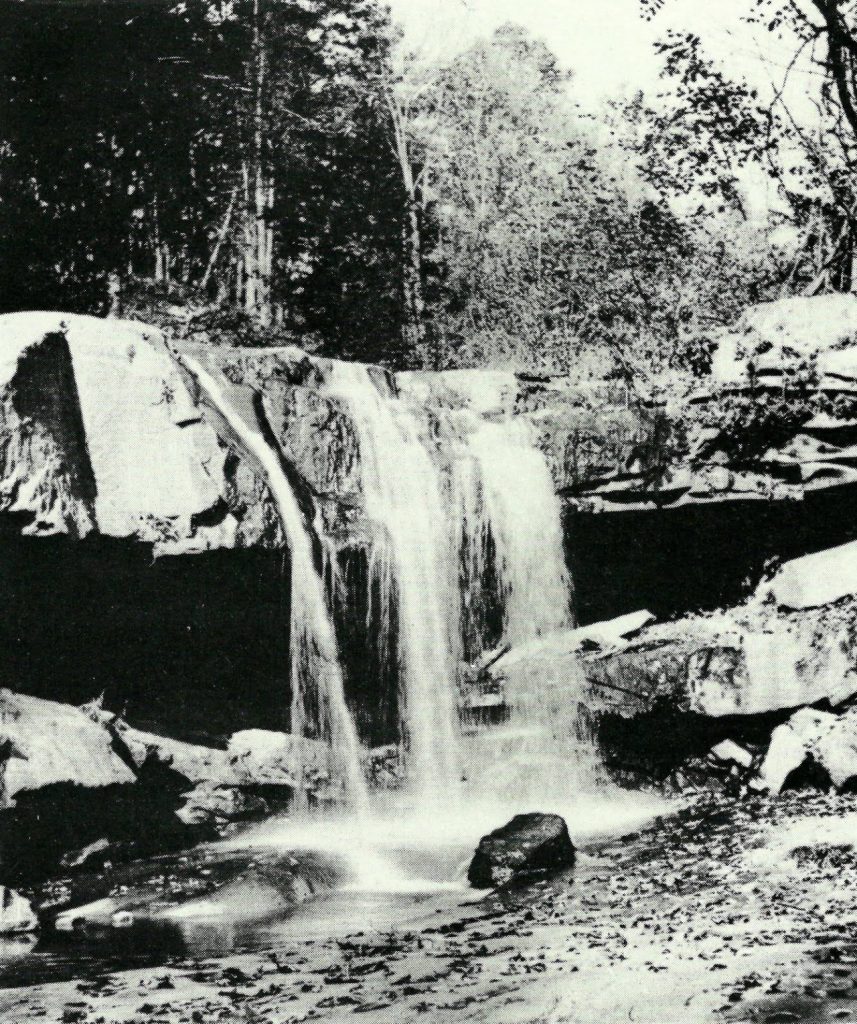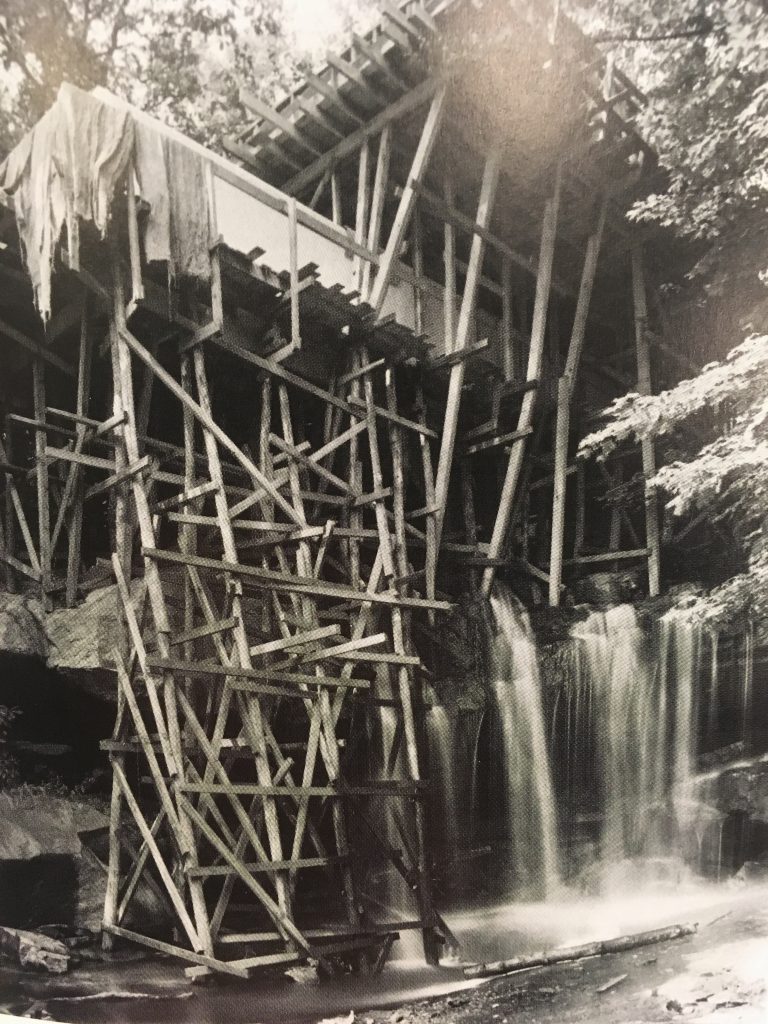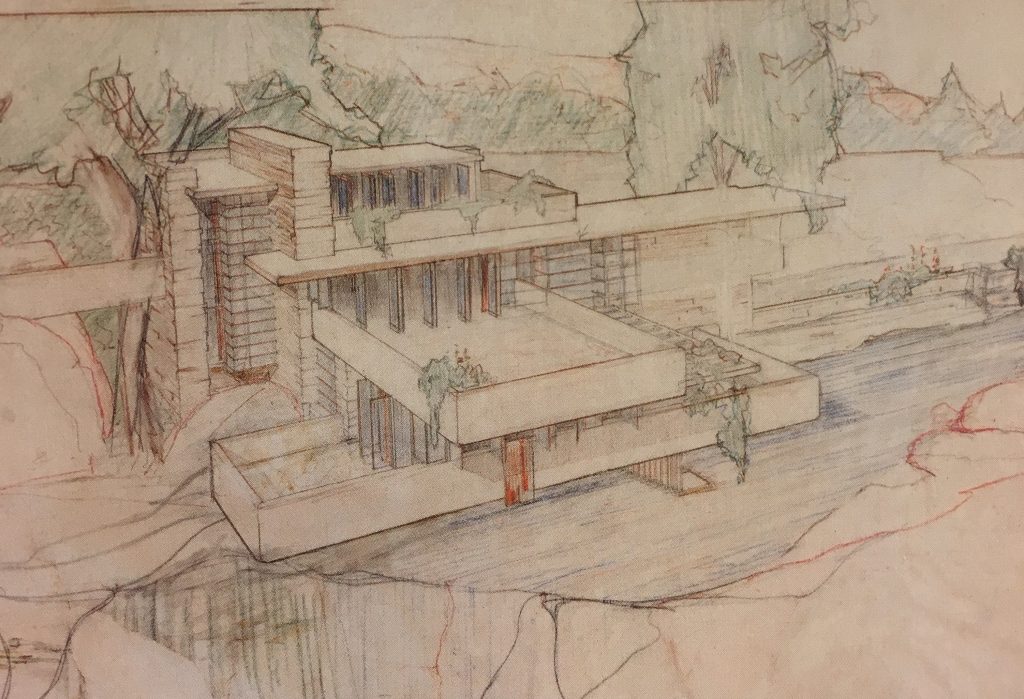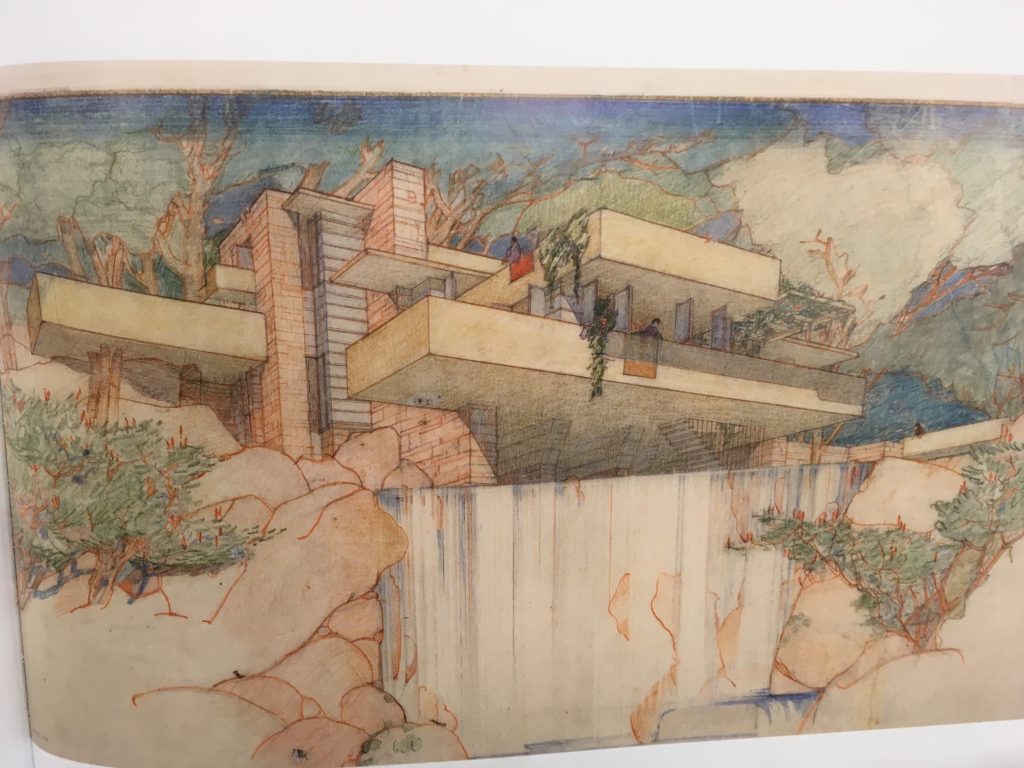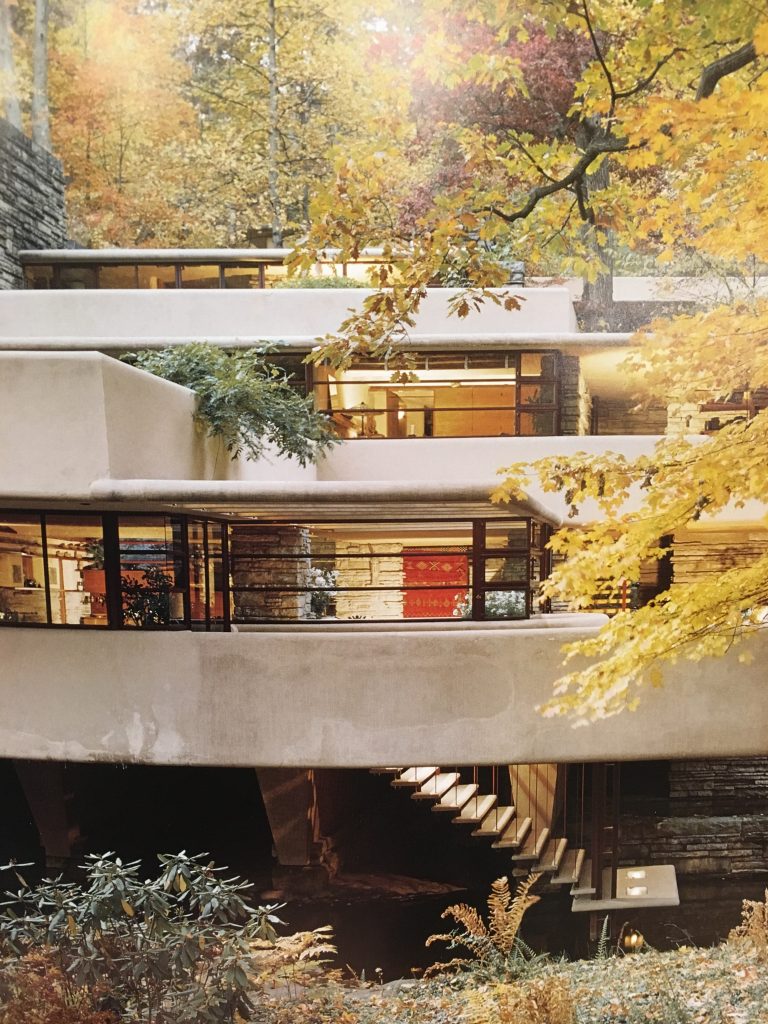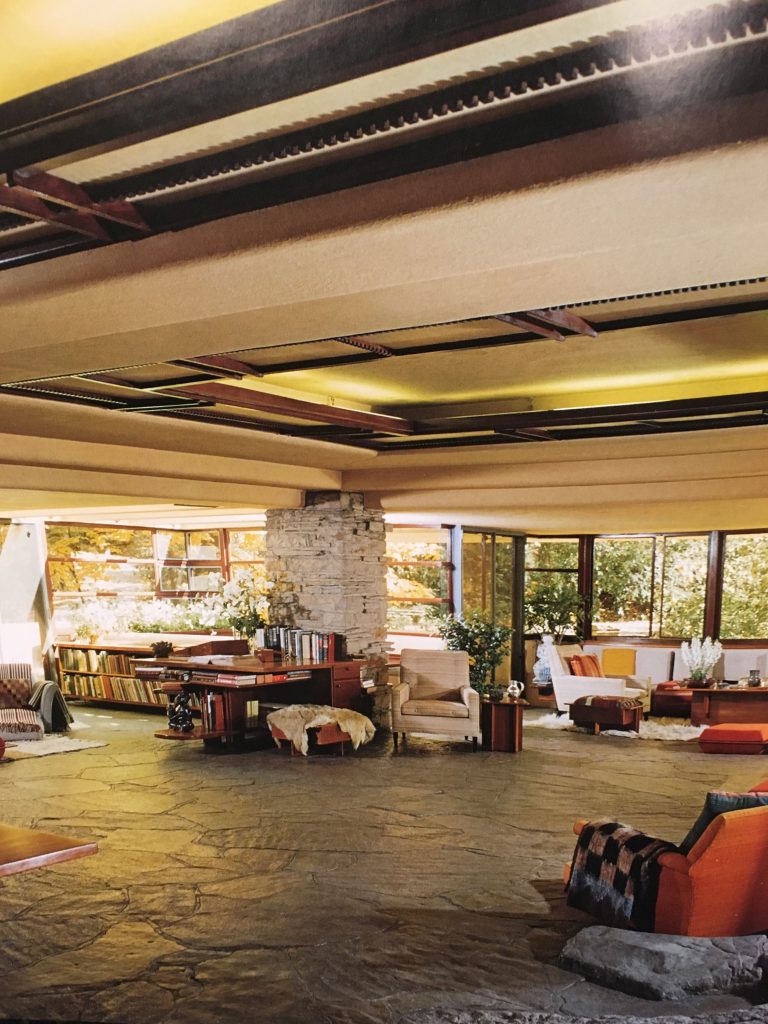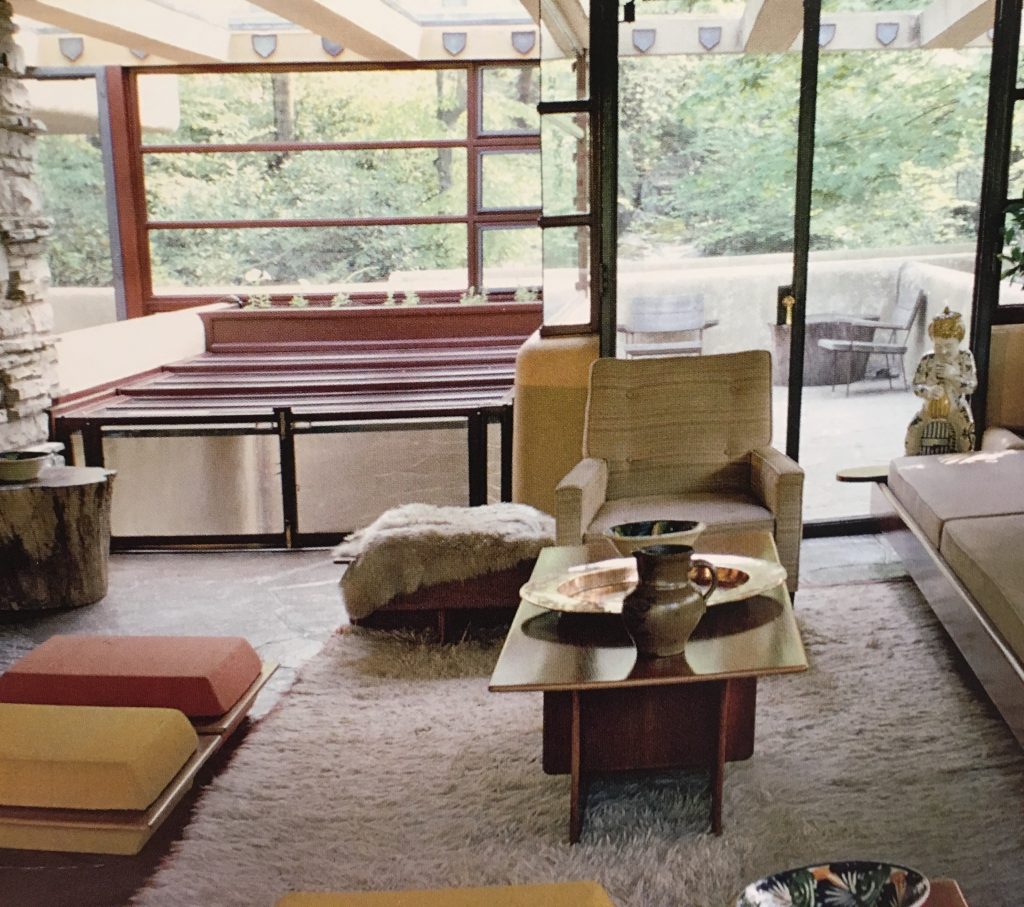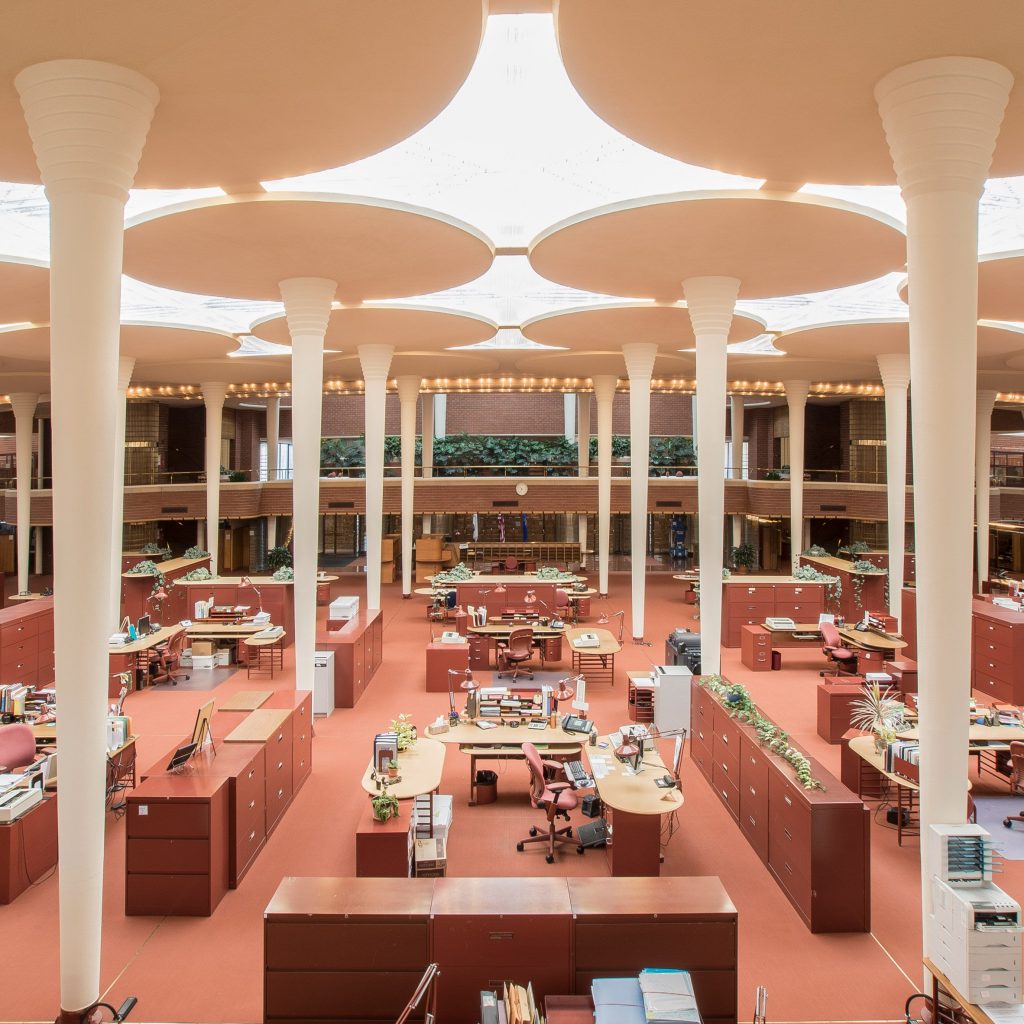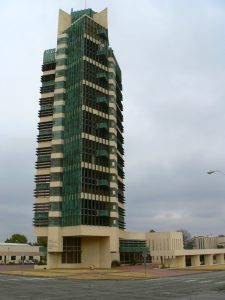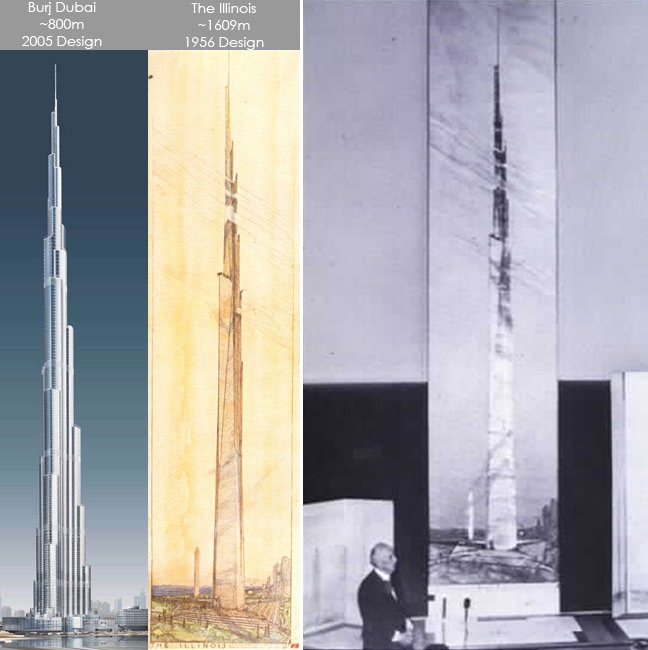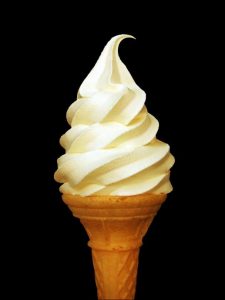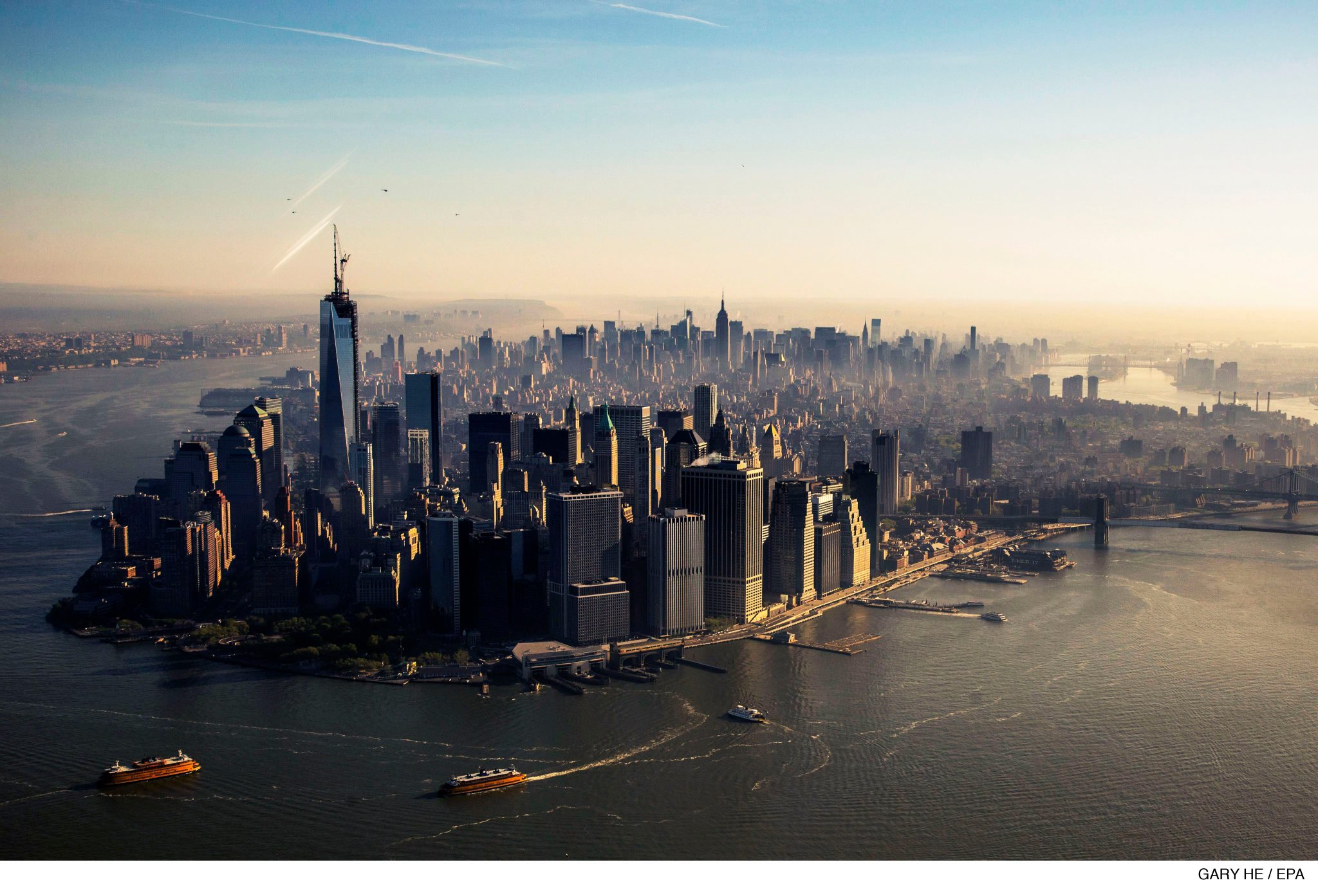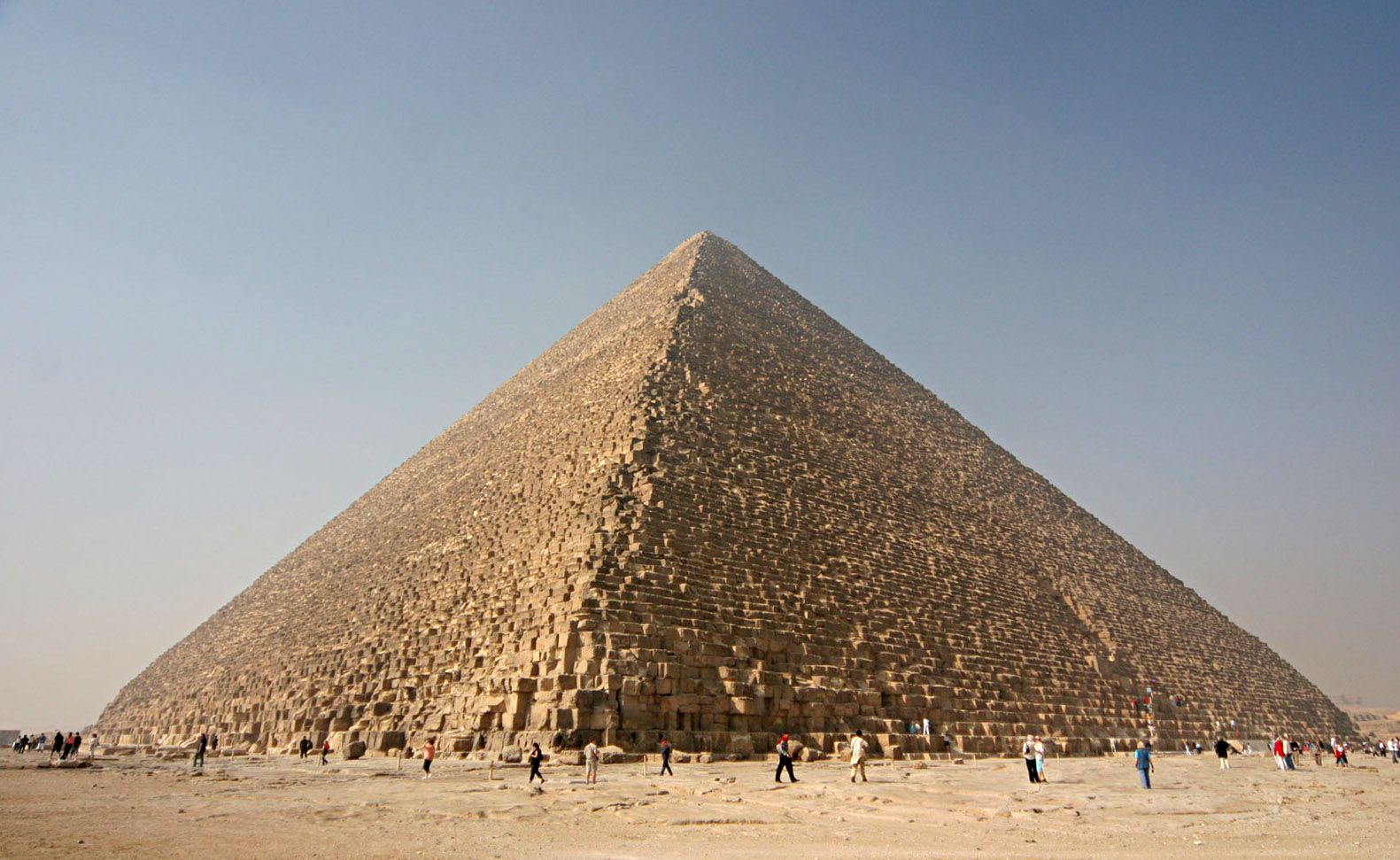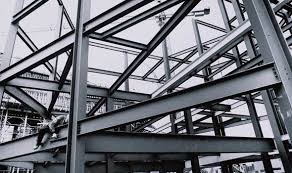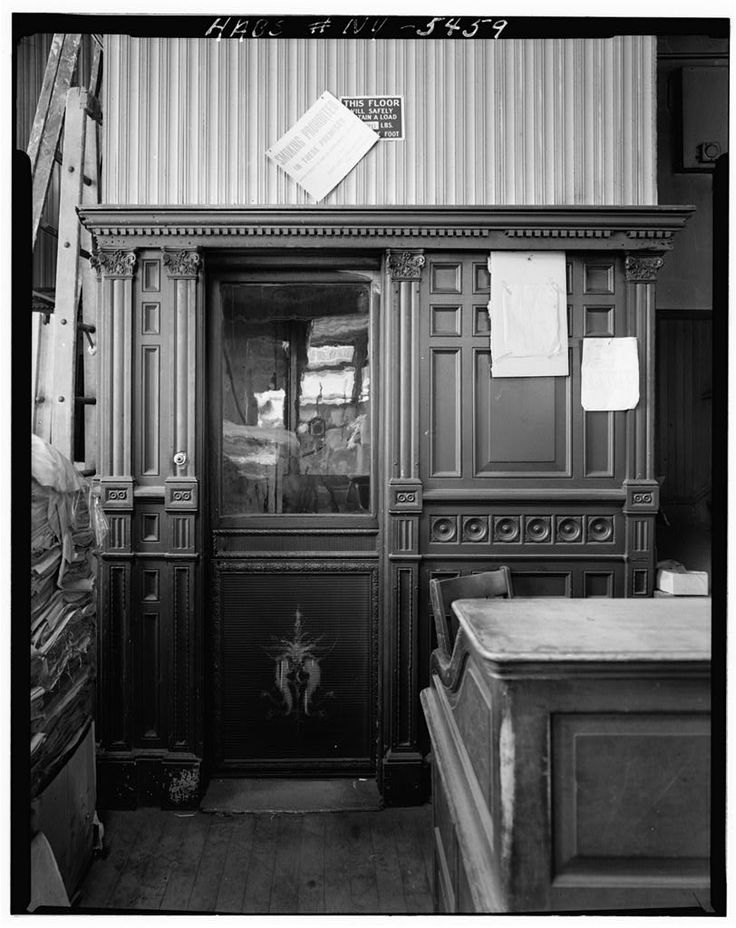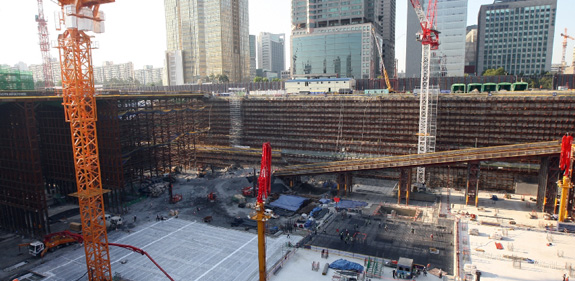3 minute read:
On April 15, 2019 at 6:58pm I was lying on the couch in boxer briefs trying to motivate myself to go grocery shopping when my phone started buzzing non-stop. I looked at one of my journalism group chats and saw this:
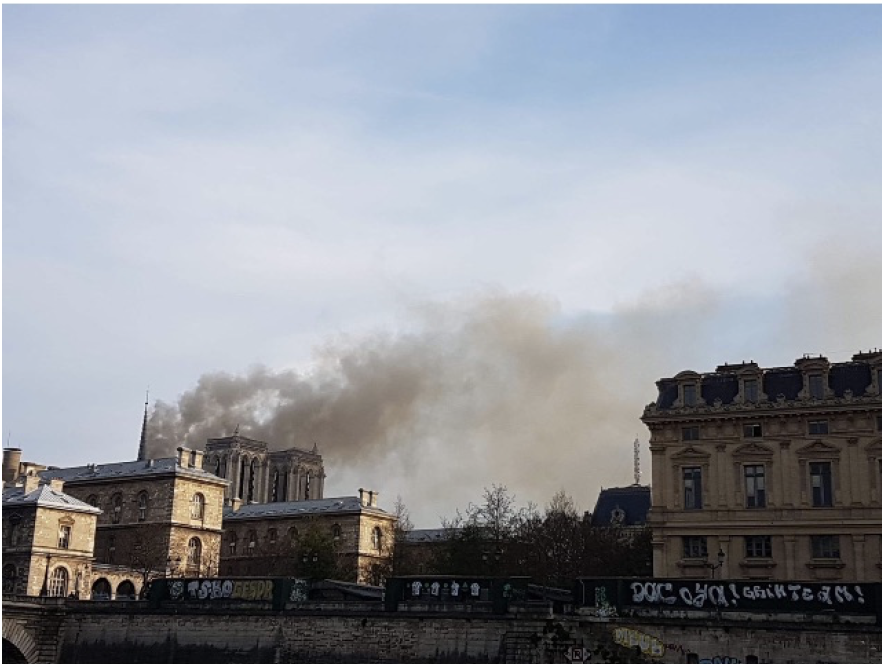
Beneath the photo I saw the messages: “Notre Dame” then “Fucking hell.”
My girlfriend was giving a seminar at La Sorbonne, right near Notre Dame, so I immediately texted her and ran to the metro. We met outside the Maubert – Mutualité stop, embraced, and threaded our way through the crowds to the Seine to get a better view of Notre Dame. My first view of the fire was this (Instagram video):
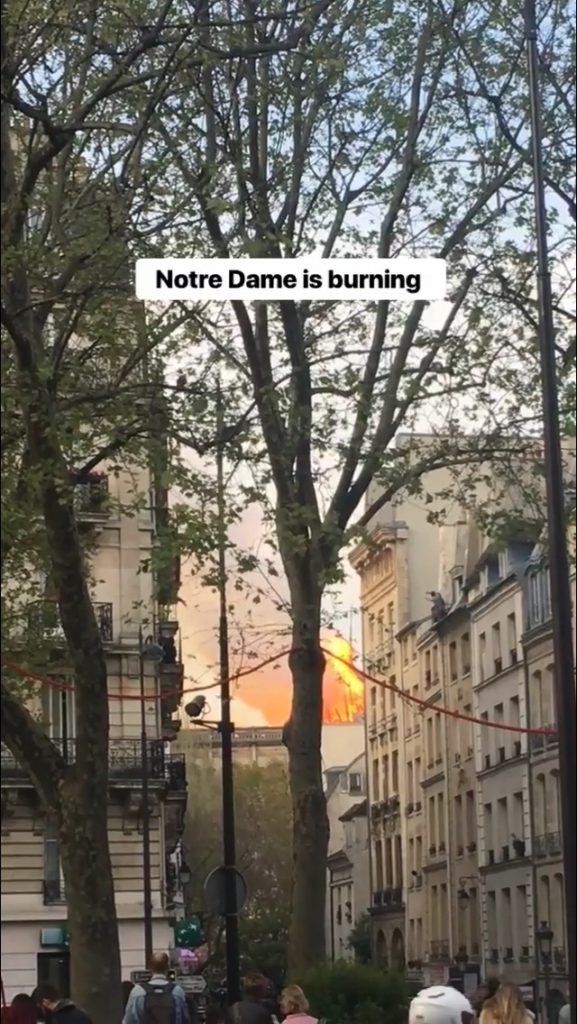
On my phone I wasn’t able to verify the cause of the fire, I only saw more pictures of smoke on group chats and on twitter.
*
Construction of Notre Dame began 856 years ago, in 1163, and was finished in 1354, so everyone who began the project were dead before they saw the results of their labor. During the early 1800s Notre Dame was neglected and falling apart, until Victor Hugo published “The Hunchback of Notre-Dame/Notre-Dame de Paris,” in 1831, revitalizing interest in the structure. Some great quotes from the book:
“Life without love is only a dry wheel, creaking and grating as it revolves.”
“The consciousness of having spent the other hours to good purpose is an excellent sauce on the table.”
“I would rather be the head of a fly than the tail of a lion.”
“I am a poet. Men of my profession are addicted to walking the streets at night.”
Upon reaching the Seine, the first photo I took of the fire up close was this, at 7:42pm:
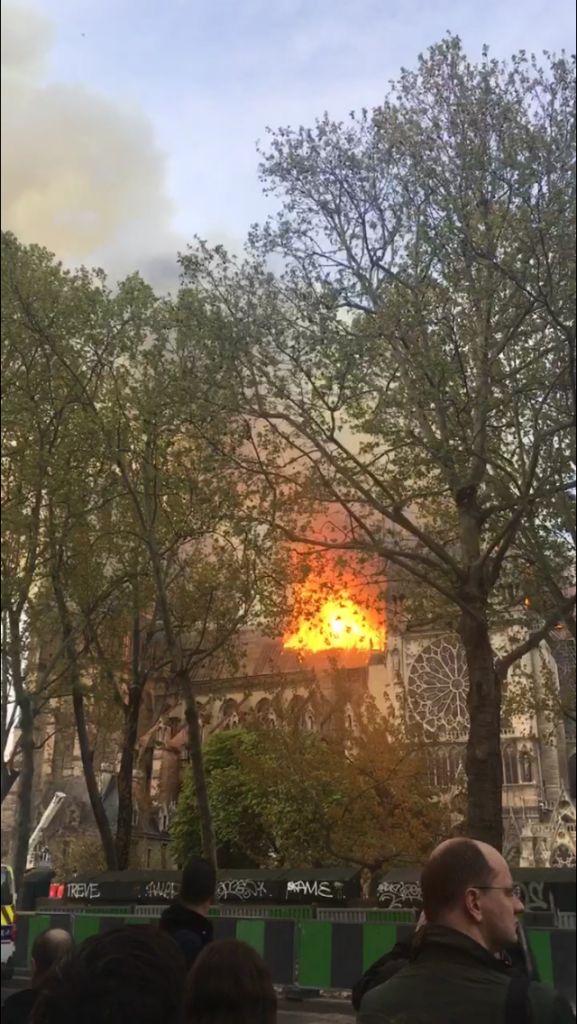
The fire was becoming worse and worse, and six minutes later it nearly covered the entire roof:
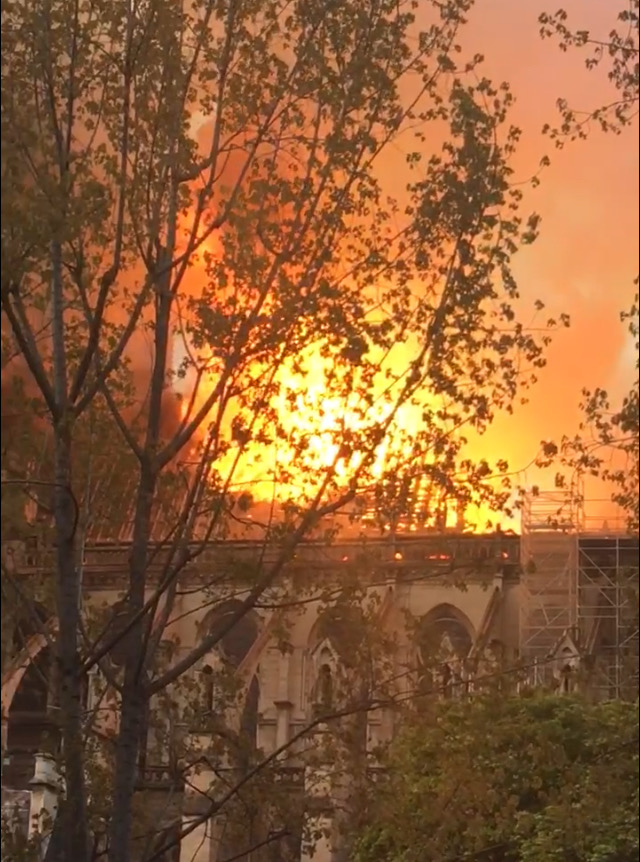
Police had roped off the street. There was a feeling of awe and shock throughout the crowds, murmuring voices, and raised phones. Most of the faces were either solemn or in tears:
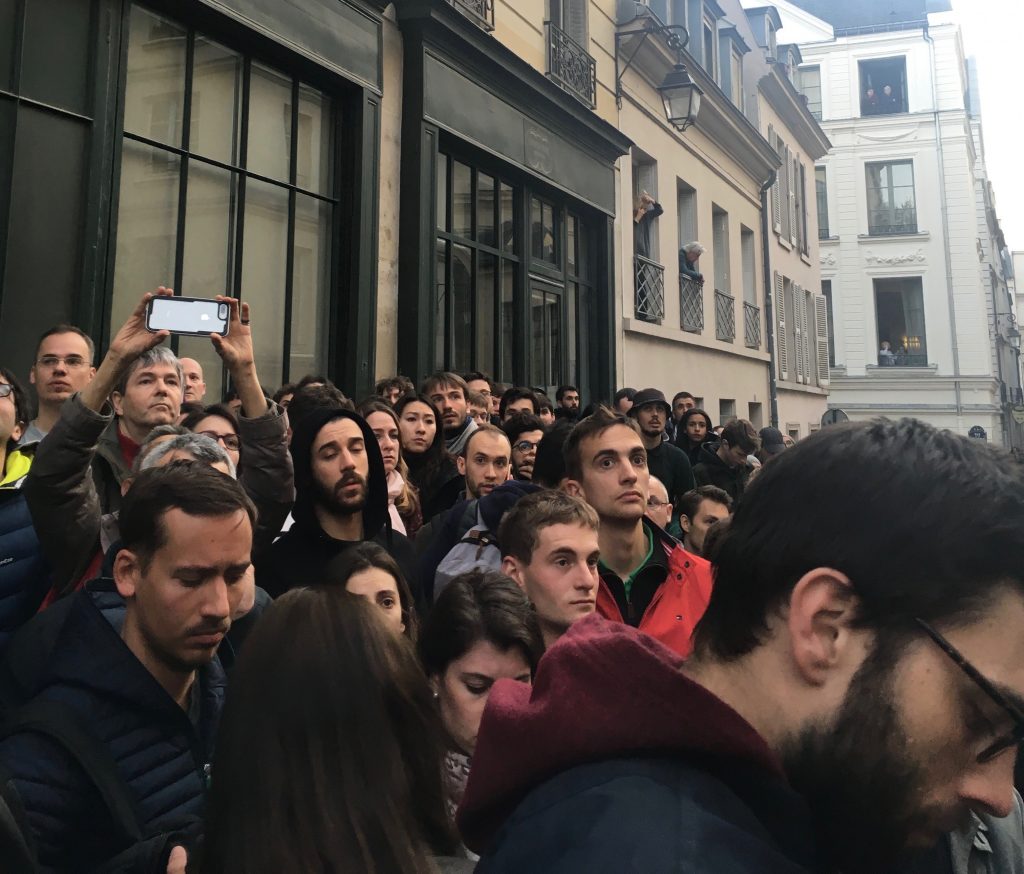
At one point there was someone pushing behind us, and I felt someone open the front pocket of my backpack. When I turned around to confront the thief, the man was already moving quickly through the crowds. Luckily, I had nothing in the pocket besides exploded pens, contacts, and dental floss. Mental note: be careful of your belongings when distracted by disasters.
The fire was spreading from north-west and to south-east and destroying the roof. The gothic spire crumbled and fell. The falling spire would be the cover of numerous newspapers the next day.
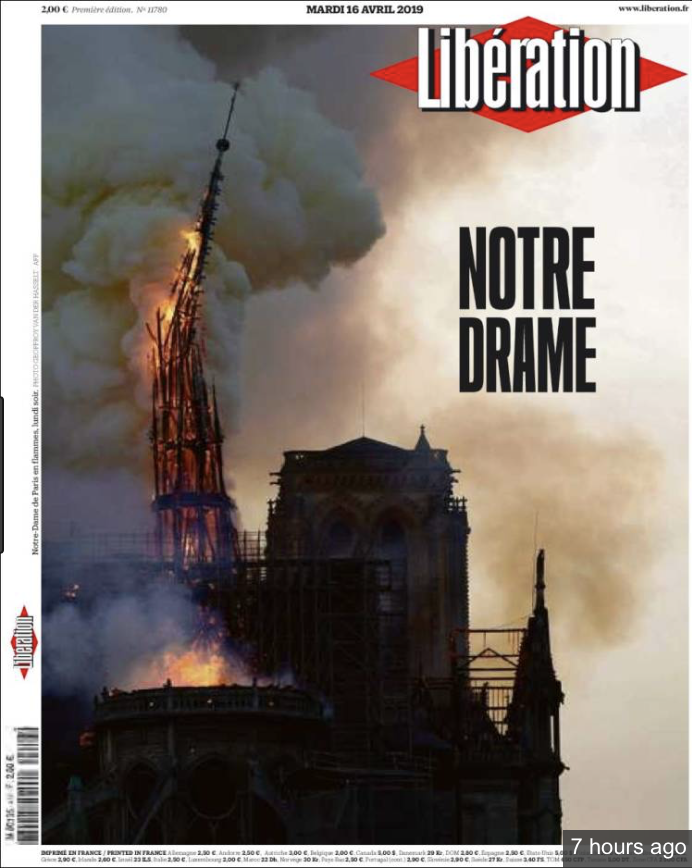
Someone nearby mentioned that the cause was being attributed to a renovation accident. But I was suspicious of this…
In 2017, the New York Times wrote an article claiming that the Notre Dame cathedral was in desperate need of renovation. The renovation was expected to cost nearly $180 million. While I was initially suspicious that a renovation accident could cause such a massive and wild fire, subsequent research revealed to me that Notre Dame is quite flammable, and even a tossed cigarette or a spark from a faulty machine could have been the cause.
The fire officially broke out at 6:45pm (13 minutes before I saw it on my phone, the power of social media) at the base of the 93 meter spire, which was constructed out of lead and wood in the 19th century. The fire rapidly spread to the cathedral’s roof that is made up of hundreds of oak beams, some as old as the 1200s. This area is known as La forêt, or the forest. For more details of the potential cause, go here.
At one point a man (probably drunk) started screaming at the police men that it was all their fault. They ignored him.
In the distance I saw the outline of a gargoyle completely engulfed in flames, as if at the gateway to hell. Another part of the roof collapsed, sending up a plume of yellow and blue smoke, that I couldn’t help think looked beautiful:
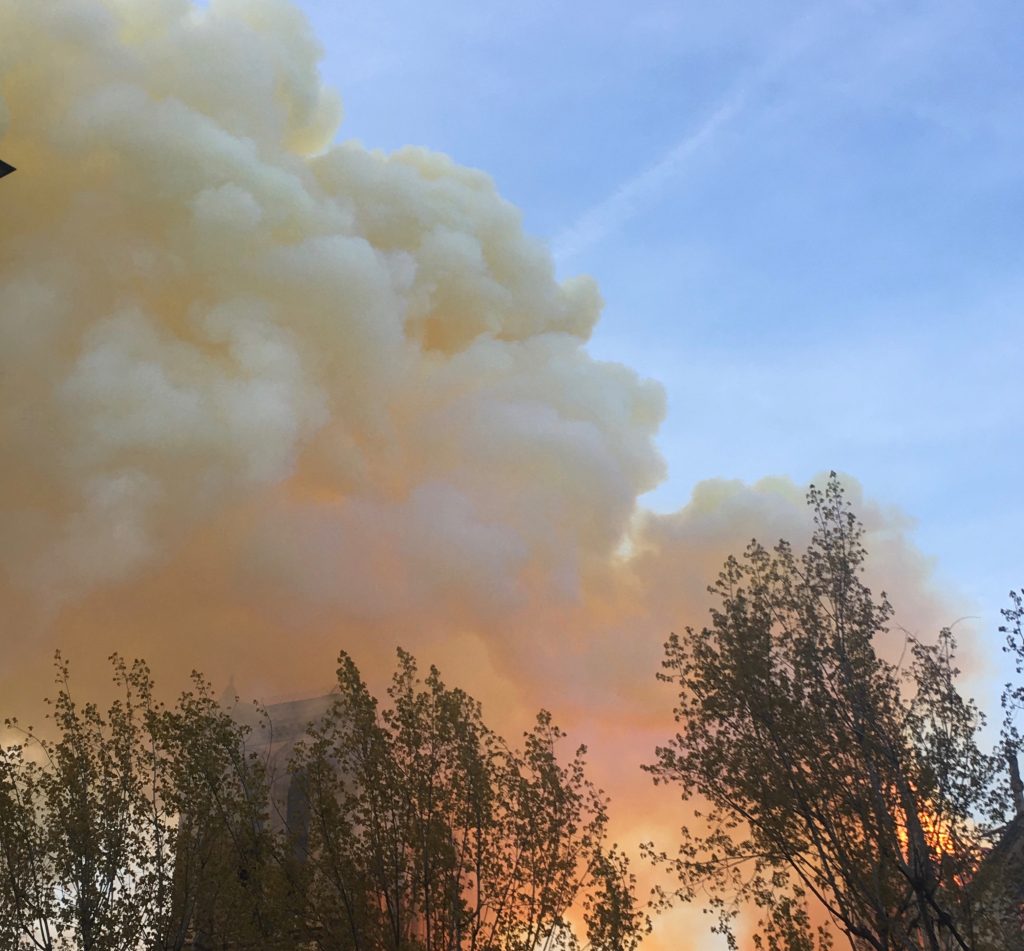
I saw one of my classmates, Trygve Ulriksen Skogseth, in the crowd with some camera equipment and waved him over. He was in intense-photographer-work-mode, and is one of the best photographers at my journalism school, SciencesPo. Here are some of the photos he took, which he has given me permission to post:
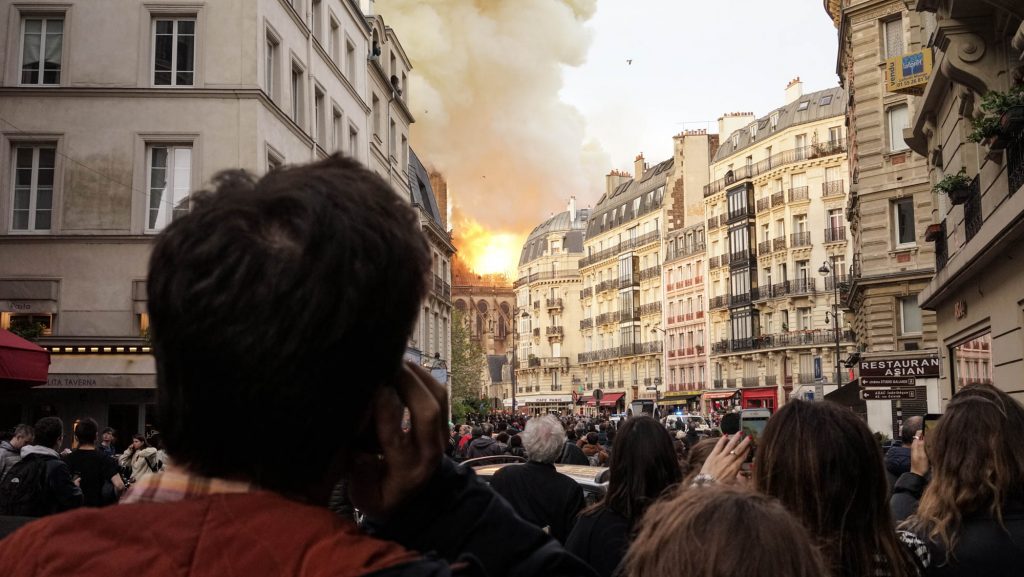
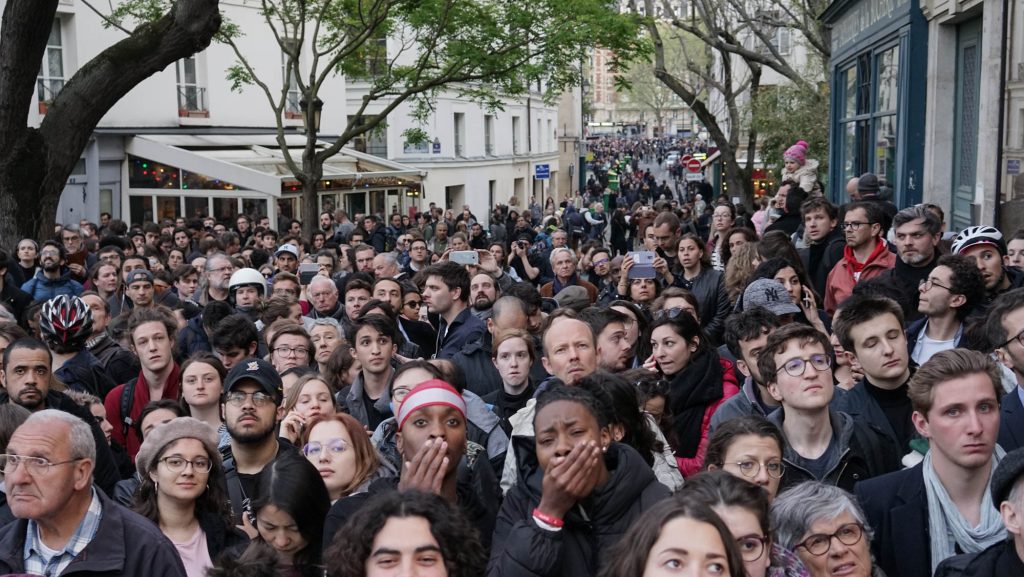
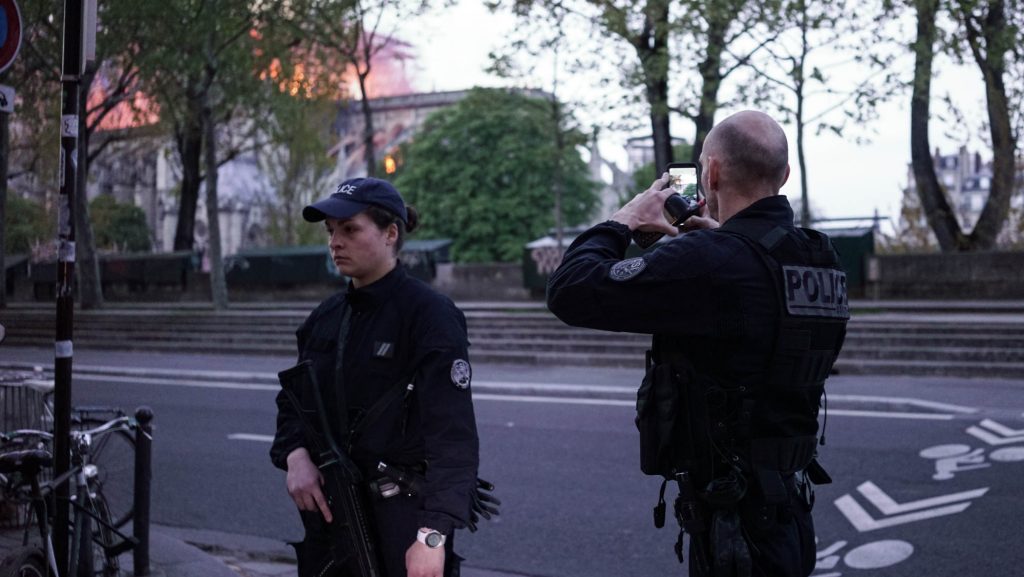
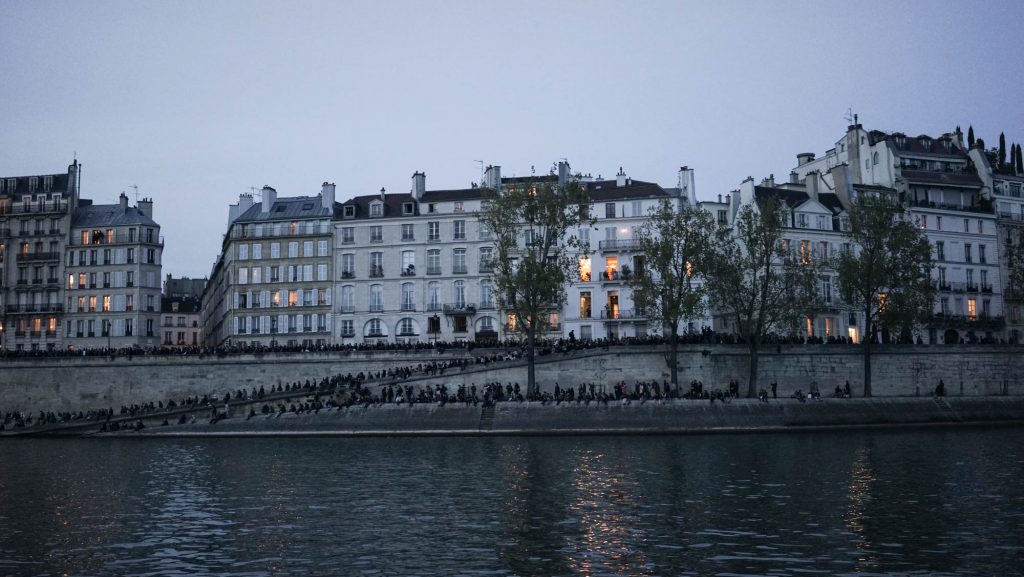
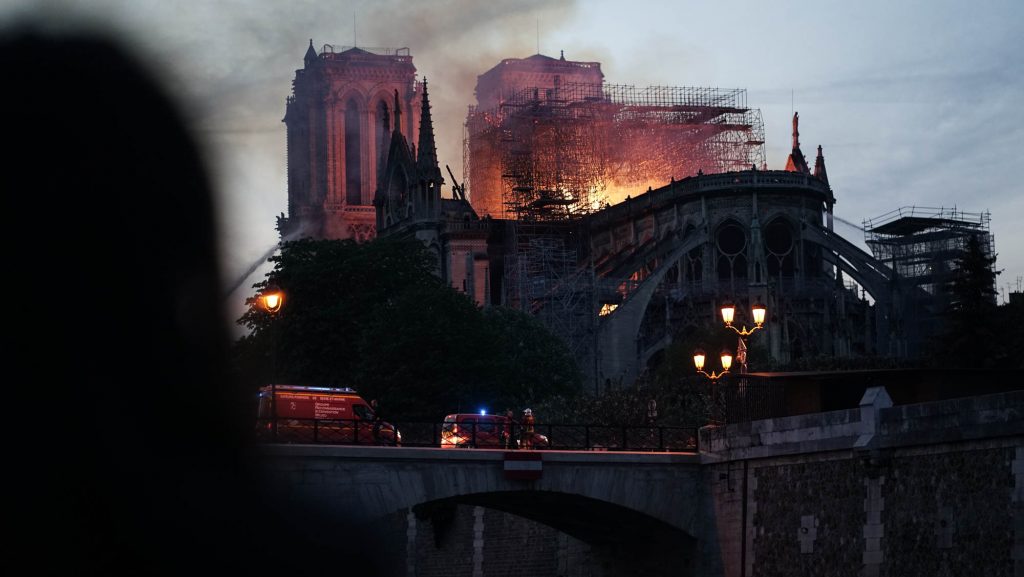
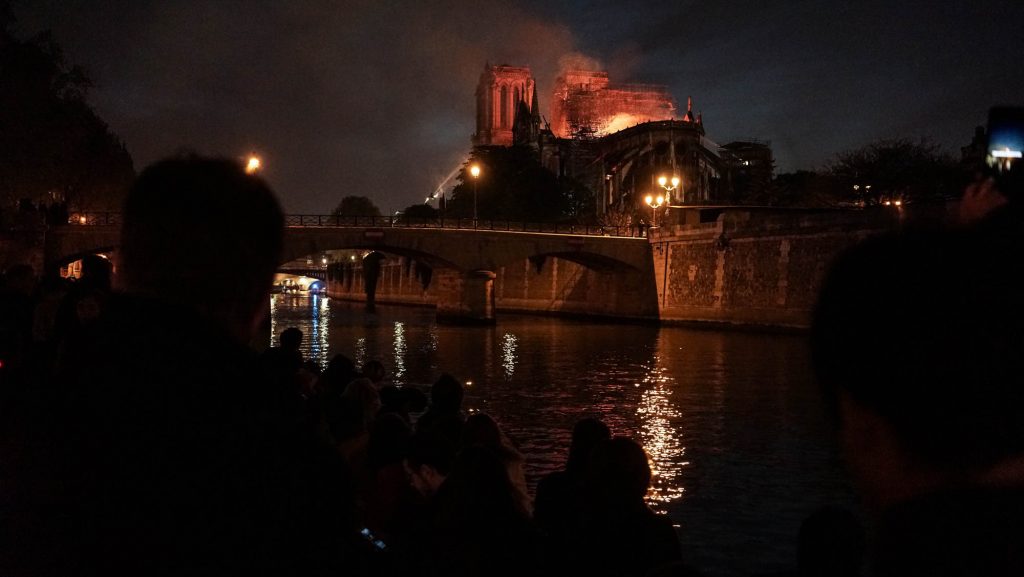
My girlfriend said, “The air smells like ash, it’s hard to breathe.” But when we turned around we realized that it was just a teenage boy smoking a cigarette right behind us. The air did have a hint of ash because of the fire, but it wasn’t that bad. Paris often smells like smoke.
We left when the roof was gone. I saw a helicopter in the sky, a firefighter at the end of a ladder near the south-east side, and measly streams of water spraying against the north-west parts of the building. Occasionally, you’d hear crashes of debris falling and hitting other parts of the cathedral.
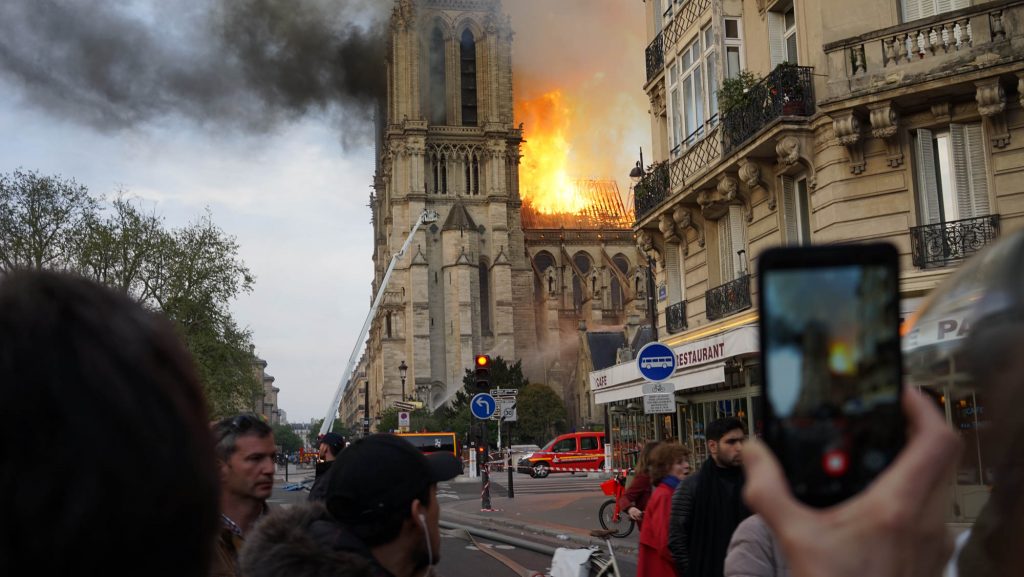
At 20h00/8pm French president Emmanuel Macron postponed his nation-wide speech called Le bilan du grand débat (debate), and he tweeted (translated into English):
Notre-Dame de Paris is in flames. Emotion of an entire nation. Thought for all Catholics and for all Catholics and for all French people. Like all our compatriots, I am sad tonight to see this part of us burn.
As usual, Trump shared his point of view:
So horrible to watch the massive fire at Notre Dame Cathedral in Paris. Perhaps flying water tankers could be used to put it out. Must act quickly!
On social media people shared their pictures and memories of Notre Dame. French friends of mine expressed deep sadness, calling it “absolutely horrendous,” “a sense of loss as if I had lost a piece of my identity,” and “heartbreaking.” But a consolation is that through the work of 400 firefighters, 15 hours after the fire started it was extinguished. They were able to save two Belfry towers, the stained-glass rose windows, the grand organ, and many historical relics. A priest helped rescue treasures from the Cathedral. Parisians came together and sang hymns as they watched Notre Dame burning.
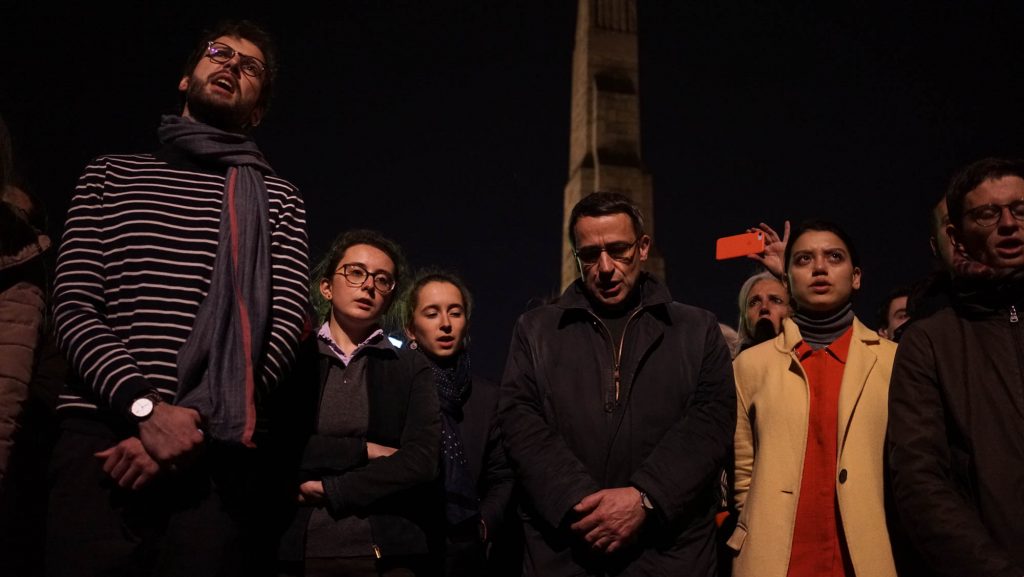
The French billionaire Francois-Henri Pinault and his family have pledged 100 million euros to rebuild the cathedral. Another French billionaire Bernard Arnault, announced he would donated 200 million euros. The mayor of Paris, Anne Hidalgo, announced that the city would make 50 million euros available. The church will be rebuilt. No deaths were reported.
*
While wandering around Paris after leaving the fire I saw people reading novels on the metro and people laughing and drinking outside cafés. There were two men tossing trash into the back of a garbage truck. In a window, somebody was hunched over a desk, consumed by a task. Churches, art, and emotions burn … life keeps moving.
Later that night I received a message from my friend, Martin Goillandeau, who considers “Notre-Dame de Paris” one of his favorite novels. The message contained the prologue to Notre-Dame de Paris, (translated from French to English):
A few years ago, while visiting and wandering through Notre-Dame, the author of this book found, in an obscure corner of one of the towers, this word, engraved by hand on the wall:
ANÁΓKH
These Greek capitals were black with age and carved deeply into the stone. I do not know which signs proper to Gothic calligraphy imprinted in their forms and attitudes, as if to reveal that it was a medieval hand that had written them there, especially the gloomy and fatal meaning they contain, strongly struck the author.
He wondered, he tried to guess what could be the grieving soul who had not wanted to leave this world without leaving this stigma of crime or misfortune on the front of the old church.
Since then, the wall has been brushed or scratched (I don’t know which one), and the inscription has disappeared. For this is how it has gone for the past two hundred years with one of the most wonderful churches of the Middle Ages. Mutilations come to them from all sides, from within and without. The priest brushes them, the architect scratches them, then the people come along, who demolish them.
Thus, apart from the fragile memory dedicated to him here by the author of this book, there is nothing left today of the mysterious word engraved in the dark tower of Notre-Dame, nothing of the unknown destiny that he summed up so melancholy. The man who wrote this word on this wall erased himself, several centuries ago, from the middle of generations, the word in turn erased himself from the church wall, the church itself may soon erase itself from the earth. That’s the word that this book is about. February 1831.
When I read this to my girlfriend, she thought of another quote, by Charles Baudelaire (from le Cygne, The Swan), which perhaps captures the feeling even more simply and eloquently:
Le vieux Paris n’est plus
(La forme d’une ville change plus vite, hélas ! que le coeur d’un mortel).
*
Old Paris is no more.
The shape of the city changes faster, alas, than the heart of a mortal.
——
Subscribe below:


